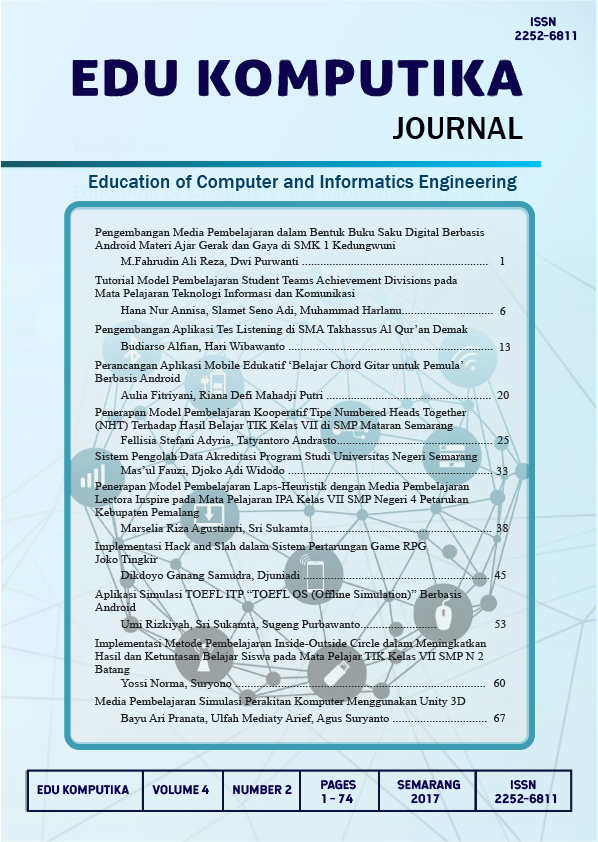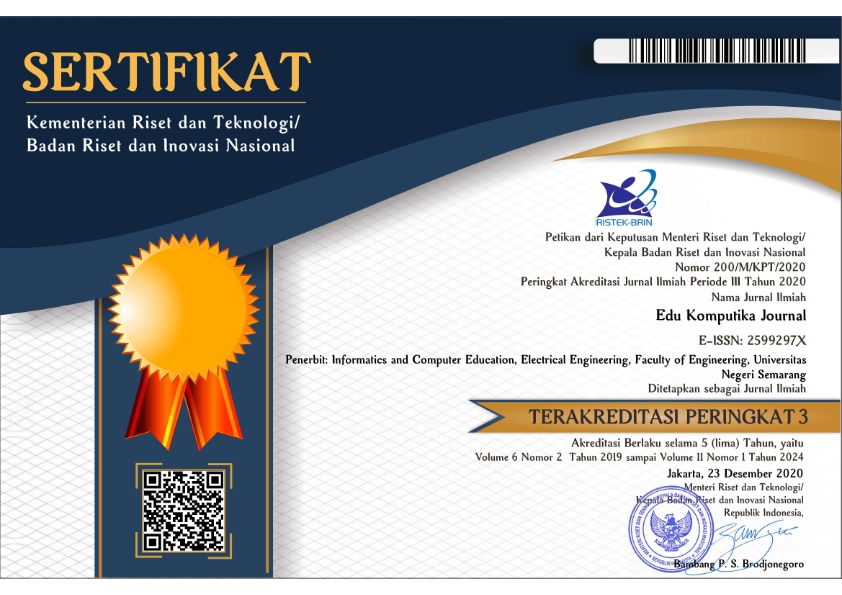A Simulation of Computer Assembly Using Unity 3D
Simulasi Perakitan Komputer Menggunakan Unity 3D
Abstract
The rapid development of information technology provides an important role in the advancement of science and the increasing of human resource quality. In addition, the development of technology can also be used as a supporter of education by developing innovative learning. This study aims to develop learning media simulation of computer assembly using unity 3D. The development of instructional media is based on ISO 9126 standard. Development of instructional media in this research using waterfall method of v-model. Qualitative data in the form of suggestions from the results of validation by the experts while the quantitative data in the form of questionnaires are tested by media experts, material experts, and respondents. The results of this study in the form of 3D-based virtual reality learning application media that contains material introduction of hardware and assembly of computers. Application testing includes black-box test and media learning feasibility test. Validation was done by two media experts and one material expert, then tested the respondents to 36 students of class X majoring in Multimedia. The result of media feasibility analysis showed 93% media expert judgment, material expert 95%, and 81% student response, so the learning media of computer assembly simulation is categorized as appropriate for use as a learning medium. Based on the results of this study, it can be concluded that this instructional media is feasible to be used based on ISO 9126 standard and feasible to be used by teachers and students as supporting learning material of hardware and assembling of computer.
Keywords: Instuctional Media, Computer Assembly, Unity 3D
















